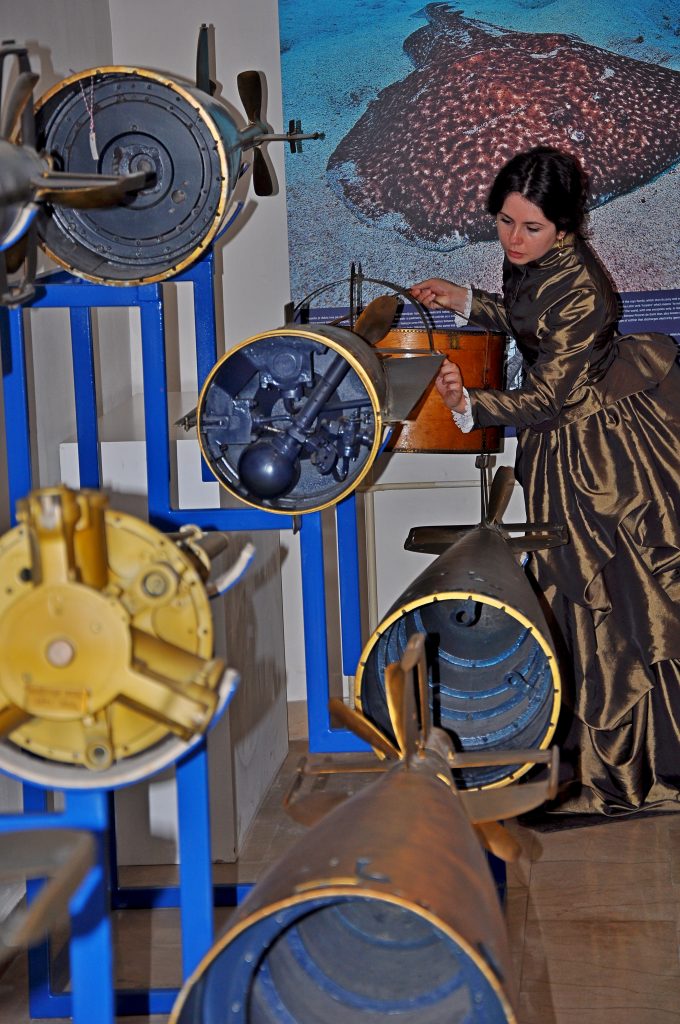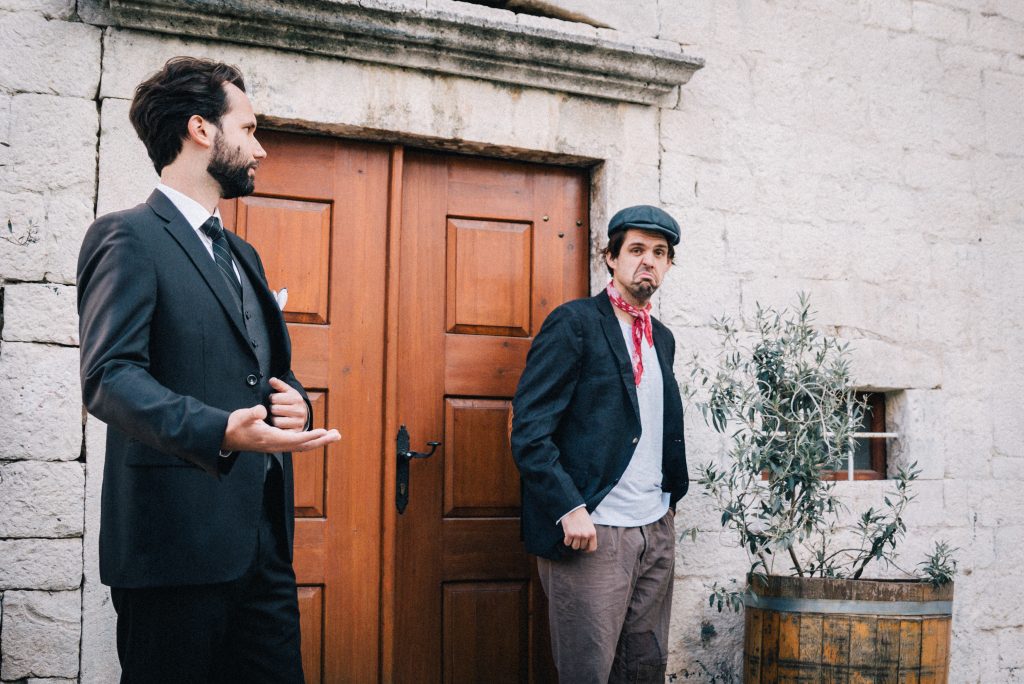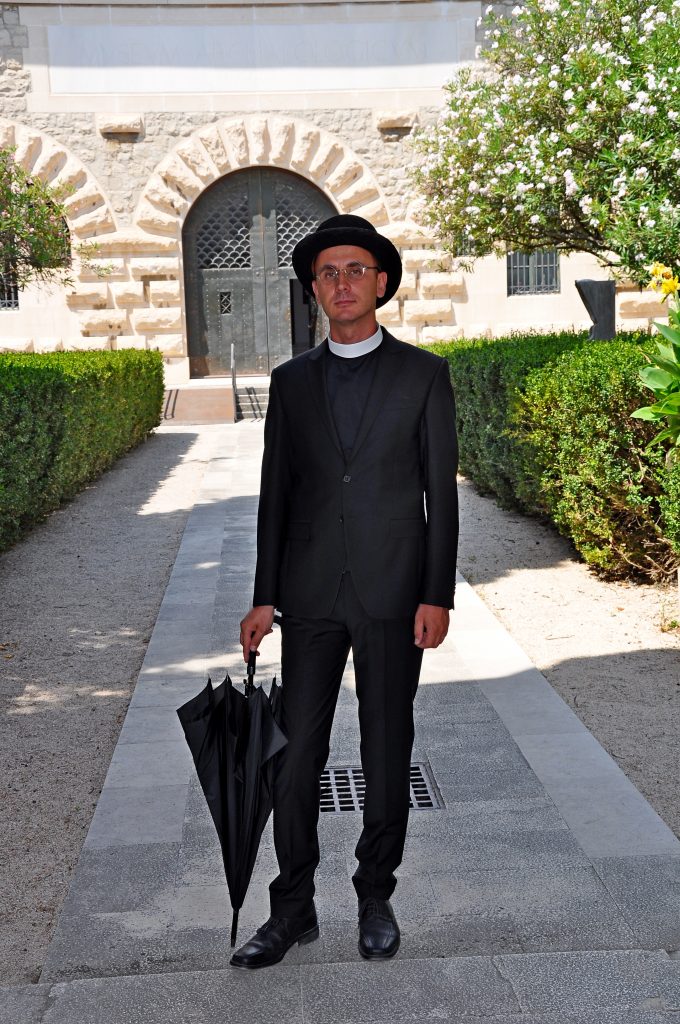This post is also available in: Croatian
Croatia is recognised on the tourist map of Europe as a country with a lot of potential, but how can we best present the cultural heritage, historical, natural and all of the other sights that our country abounds in?

In Split-Dalmatia County, they found an innovative formula – the Dalmatia storytelling destination project, which revives characters steeped in heritage in museums and other important sites and creates thematic interpretive walks. This is a unique project in Croatia and Europe, within which 23 thematic interpretation walks were created and 16 heritage characters were revived.

Projekt nije namijenjen samo turistima, već i domaćim stanovništvu. Cilj projekta je kreirati turističke The project is intended for tourists, but also for locals, and works to create tourist experiences through the telling of authentic stories, which will be commercially available to the public through the county storytelling platform in the form of finished tourist products such as themed interpretation walks and costumed guides, storytelling trips and storytelling events. The aim of the project is to preserve and present Dalmatian cultural heritage and develop an offer encompassing year-round tourism in Split-Dalmatia County.

As part of the project activity of reviving heritage characters, costumed heritage interpreters (educated tourist guides or curators) will present the specifics of the museums and/or sites through the life stories of the people they’re dressed as to visitors. As such, they’ll make the stories authentic, picturesque, emotional, interactive and introduce visitors to an experience where together with the performers, they’ll immerse themselves in a kind of time machine from which they’ll emerge richer in knowledge and understanding towards the heritage story they were told and the place they visited.


As part of Dalmatia Storytelling, Split’s museums will take you on a journey through time where you will experience all of this area’s sheer beauty and sights in full splendor, but also feel sadness, passion, joy, defiance, love – life drivers that lead to wars, and which sometimes direct the circumstances quite unexpectedly, differently, but always interestingly. Travelling through the paths of Split’s stories is a way to emotionally immerse yourself in Split and peek into the souls of its people.

BIRA MARULIĆ’S TOUR, A NOBLE FROM THE 16TH CENTURY AND THE SISTER OF MARKO MARULIĆ
INTERPRETER: GORANA GALIĆ
LOCATION: THE MUSEUM OF THE CITY OF SPLIT

Bira MaBira Marulić was a truly special woman, and with an interpretive walk with this noblewoman (played by a performer) through the Museum of the City of Split, you will learn many interesting things about Marko Marulić, the author of the historical epic – Judita. Visitors will be offered a view of Renaissance and humanistic Split within the permanent exhibition of the museum, located in the Gothic-Renaissance palace of the Papalić family. Back during the 16th century, it was a gathering place for the intellectual cream of the crop of the City of Split, led by the literary bard, Marko Marulić, who enjoyed a great, firm friendship with this family. Back then, of course, Bira wasn’t part of that “male world.” She decided very early on that she would be ordained in a nearby Benedictine monastery next to Dioletian’s Palace, but despite that, she remained closely associated with her brother Marko.


Stoga će vam interpretatorica koja utjelovljuje plemkinju Biru, sestru oca hrvatske književnosti Marka M
Therefore, the interpreter who embodies Bira the noblewoman, the sister of the father of Croatian literature Marko Marulić, but also a witness of that time, will present the way of life in Renaissance Split, providing her insight as a noblewoman, who witnessed very many turbulent historical and political events.
In her story, she points out the poor position of women at that time who were left as widows or without their fathers and brothers, and thus without the protection of the breadwinners, so they would often seek protection within the walls of the monastery of St. Benedict and the church of St. Euphemia, some of them becoming nuns.
THE MAGDA LUPIS TOUR – TORPEDO INVENTOR IVAN LUPIS’ RELATIVE
LOCATION: THE CROATIAN MARITIME MUSEUM IN SPLIT
INTERPRETER: PETRA BLAŽEVIĆ
If you want to experience the heritage of millennial Adriatic seafaring in an innovative way, join this interpretation tour with Petra Blažević, a curator disguised as a lady from the 19th century.
In going through the museum’s exhibit, you will be able to imagine what it would have been like to live in these exciting episodes of the past. Mrs. Magda Lupis will introduce you into this proverbial time machine and together you will embark on an exciting journey. Thanks to the method of costumed interpretive guidance, you will have the opportunity to gain a completely new experience by following the timeless Miss Magda, a cousin of the famed torpedo inventor Ivan Lupis.



The whole tour revolves around one ordinary break that all travellers, including tourists themselves, experience while traveling to their various Adriatic destinations. This break, however, will be anything but ordinary. The year is 1866, and Magda is on a steamboat trip on the Gruž-Rijeka route and is currently preparing to visit the museum during a break between the arrival and departure of the ship from the Port of Split. If you want to experience Croatian history with the taste of salt in the company of a brave adventurous woman, feel her passion in discovering something new, and also hear interesting stories about the great invention of the torpedo, don’t miss out on time travelling 155 years back to Split’s Gripe Fortress.

THE REVIVAL OF AUTHENTIC HISTORICAL AND LOVE STORIES FROM VELI VAROS
INTERPRETERS: BOŠKO PAPIĆ AND IVAN BARANOVIĆ
LOCATION: VELI VAROS Interpreters dressed as the famous Mayor of Split Ivo Tartaglia and local fisherman Roko, along with his beloved Cicibella, will take you for a walk through this picturesque suburb. You will learn all the interesting things about this part of Split, and also peek into human destinies, which wrap around these stories like a piece of very fine silk. The special feature of this tour is the discovery of what is not written in tourist guides, real life, woven with many emotions of the local population.


Posebnost ove ture je otkrivanje onoga što ne piše u turističkim vodičima, realnog života, istkanog The tour starts from Matejuška, a small fishing port where the inhabitants live from fishing, before turning to the south side of Varoš where the monastery of St. Francis from the 13th century can be found. Not far from the monastery at that time, the smell of sulfur could be strongly felt. Sulfur springs were discovered by Emperor Diocletian and springs were regularly used for healing, women also used to wash clothes at that same spring.

Walking through the small stone streets, visitors will discover what else the people of Split built in the 16th century in order to attempt to defend themselves from the Ottoman conquests, as well as what motives were the eternal inspiration of the famous painter Emanuel Vidović. Roko explains in his own way another peculiarity of Split – a specific sense of humor, prone to ridicule and sarcasm. Roko recounts what the game of hats looks like in moments of entertainment for the locals and how important wine is to them. Mayor Tartaglia presents local taverns as an indispensable part of the town’s folklore and fraternity and explains the role of faith in the lives of the townspeople who always dream and hope for a better life. It must be noted that this particular tour isn’t currently adapted for people with disabilities.

THE STORY OF DON FRANE BULIĆ
VENUE: THE ARCHAEOLOGICAL MUSEUM OF SPLIT
INTERPRETER: NINO ŠVONJA
This costumed interpretive walk begins at the entrance to the museum where Don Frane Bulić, more precisely the performer in the modern day, talks about the history of the museum, with a well-known anecdote about the acquisition of the money for the construction of the building itself.

Kostimirana interpretacijska šetnja počinje na ulazu u Muzej gdje don Frane Bulić, odnosno interpretator, g
THE STORY OF DON FRANE BULIĆ
VENUE: THE ARCHAEOLOGICAL MUSEUM OF SPLIT
INTERPRETER: NINO ŠVONJA
This costumed interpretive walk begins at the entrance to the museum where Don Frane Bulić, more precisely the performer in the modern day, talks about the history of the museum, with a well-known anecdote about the acquisition of the money for the construction of the building itself.

The lapidary can be visited during this tour, as can all of the stone monuments. Don Frane managed to purchase the sarcophagus of Valeri Dinent and his wife for the museum, the only unlooted sarcophagus in Salona (the modern day Solin). Don Frane mentions another sarcophagus – the Sarcophagus of the Good Shepherd. When the building was being constructed, he first had a sarcophagus erected, and only then did he erect a tower so that the sarcophagus could never be carried away.


INTERPRETATION TOPIC: OLGA MESTROVIC ON IVAN MESTROVIC
INTERPRETER: IRIS MARINOVIC
LOCATION: THE MESTROVIC GALLERY This tour is a reflection of Meštrović’s family life through the memories of his wife, Olga Meštrović. The backbone of the thematic storytelling are the personal experiences and memories from the family life of the artist’s wife who talks about the artist’s profession and his work – sculptures which are in the permanent exhibition of the gallery.

The direction of this tour follows the chronology of events in their family and life. The tour begins in the garden with a conversation about the construction of a villa in Meje, with a look at the beautiful moments enjoyed as part of family life, in the central hall the theme is getting to know the artist and his wife, their love, their marriage and Olga’s character, which is very much present in her husband’s stunning sculptures. More can be learned about their children and Meštrović’s mother, and about the family habits and what was on the menu and on the dining table back then. On the upper floor, attention is drawn to the sculptures that reflect the physiognomy of Olga, as well as Meštrović himself.



INTERPRETATION TOPIC: RUŽA MEŠTROVIĆ AND THE STORY OF IVAN MEŠTROVIĆ
INTERPRETER: VESNA BULIĆ BAKETIĆ
LOCATION: THE MEŠTROVIĆ GALLERY IN SPLIT
Rosa Elizabeth Klein was Meštrović’s first, and very artistically gifted wife, who skillfully mingled in the artistic and intellectual circles of various European capitals, which significantly helped the affirmation of Meštrović as an artist. The tour begins on the central plateau in the Gallery’s garden or under the porch, where visitors are introduced to the house’s history and architecture. What follows is a tour of Meštrović’s works from the Viennese and London periods of his life.

The inner part of the tour starts from the room where one of Rosa’s more sensual, feminine sculptures is located. By the way, the Gallery also houses two works, which she made herself.
In the Secession exhibition room there is also a sculpture called Girl Singing, for which the model was Olga Klein, Rosa’s youngest sister. Rosa talks about her childhood, youth and the circumstances of meeting a young Slavic sculpture student in the Austrian capital of Vienna, in a very interesting historical period.
In the central hall next to the Vestalka sculpture, stories about the life of artists across Europe follow. The sacral hall contains a theme that constantly runs through Meštrović’s oeuvre, and is especially intense during the construction of the mausoleum of the Račić family down in Cavtat. These sculptures were created as a result of the artist’s sculptural maturity in the 1930s and the beginning of his family life. Here is where Rosa ends her story, passing away in 1942, with Meštrović continuing to live his life with his new family.




INTERPRETATION TOUR: MARKO UVODIĆ FROM SPLIT
INTERPRETER: HRVOJE COKARIĆ AND MARINA ABRAMOVIĆ
LOCATION: THE NATURAL HISTORY MUSEUM AND ZOO
The interpretation tour includes short stories by Marko Uvodić, published in his work Libar. The focus is on the coexistence of man and donkey in Split, at the beginning of the 20th century. In practice, this is a fifty-minute costumed interpretation of historical heritage, which begins with a walk in the fishing port of Matejuška, through Veli Varoš, and ends in the forest on Marjan, above the church of St. Nicholas. The interpreting team includes both an interpreter and a donkey.
The story relies more on research and the presentation of the coexistence of man and donkey in the Split of old, rather than on highlighting the historical locations of Veli Varoš and Marjan. The focus is placed on bringing the culture of the Split peasant closer, in the historical, political and cultural context of the then Split and of Europe as a whole.
The introduction refers to the then culture of the “little man” from a rather cynical point of view, avoiding the glorification of the local culture. This sort of interpretation is approached critically and satirically and the presentation is suitable for groups of 2 to 20 people. In addition to the standard fifty-minute interpretation, there is also a shortened version of 30 minutes, which ends at the first lookout, and a more extensive version of 70 minutes, which ends at the Split Zoo. The interpretation tour is suitable for people over the age of 10, but is not suitable for people with disabilities due to the relatively long walk involved in the tour.


This post is also available in: Croatian
